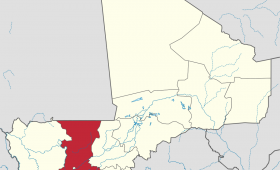Location and Overview
Mount Aspiring National Park, established in 1964, is a vast expanse of wilderness in New Zealand’s South Island. Spanning 3,562 square kilometers, it stretches across the West Coast, Otago, and Southland regions. The park is named after its highest peak, Mount Aspiring/Tititea, which rises to 3,033 meters, making it the tallest mountain in New Zealand outside of Aoraki/Mount Cook National Park.
The park’s landscape is a dramatic mix of towering mountains and expansive river valleys, part of the Southern Alps range. It includes the historic Haast Pass, a crucial route used by Maori and European settlers. Today, it remains the only road connecting the Otago and West Coast regions.
Flora and Fauna
Mount Aspiring National Park is a sanctuary for diverse plant and animal life. Its ancient beech forests are home to various bird species, including the New Zealand falcon and the endangered rock wren. The elusive kea, the world’s only alpine parrot, can also be spotted here.
The park’s alpine meadows burst into color during the summer with wildflowers, including the rare and beautiful Mount Cook lily. Although the takahe and kakapo are no longer found here, the park still supports the rowi, the rarest species of kiwi.
Activities and Attractions
Visitors to Mount Aspiring National Park can engage in a variety of activities, from hiking to scenic flights.
Hiking and Tramping
The park offers numerous trails for all levels of hikers. The Routeburn Track provides stunning views of mountains, lakes, and waterfalls. For a more challenging trek, try the Gillespie Pass Circuit. If you’re looking for a shorter walk, the Blue Pools Track is a 30-minute stroll through beech forest to glacial-fed pools.
Scenic Flights
For a unique perspective, consider a scenic flight over the park. You’ll see the majestic mountains and pristine wilderness from above, an unforgettable experience.
Fishing and Kayaking
The park’s rivers and lakes are ideal for fishing and kayaking. Lake Wanaka and the Dart River offer excellent opportunities for paddling adventures. Anglers can find spots to try fly fishing, whether they’re seasoned or beginners.
Best Time to Visit
The summer months, from November to February, are the most popular time to visit due to mild weather. However, this is also the peak tourist season. For a quieter experience, consider visiting in spring (September to November) or autumn (March to May). Be prepared for cool temperatures and rain, especially in the West Coast region, known for its high rainfall.
How to Get There
Queenstown Airport is the nearest major airport, about a 1.5-hour drive from the park. From Queenstown, you can rent a car or take a shuttle to the park’s entrance. Public transportation options include bus services between Queenstown and Wanaka, where you can rent a car or join a guided tour.
Local Transportation
Having a car is the most flexible way to explore the park. Roads to some areas, like the Mount Aspiring/Tititea section, are unsealed and best navigated with a 4WD. Guided tours are available and often include transportation and guide services.
Visitor centers in Wanaka and Haast provide information and assistance. The Wanaka center is located at 1 Ballantyne Road, open from 8 AM to 5 PM. The Haast Visitor Center is on State Highway 6, open daily from 9 AM to 4:30 PM.



